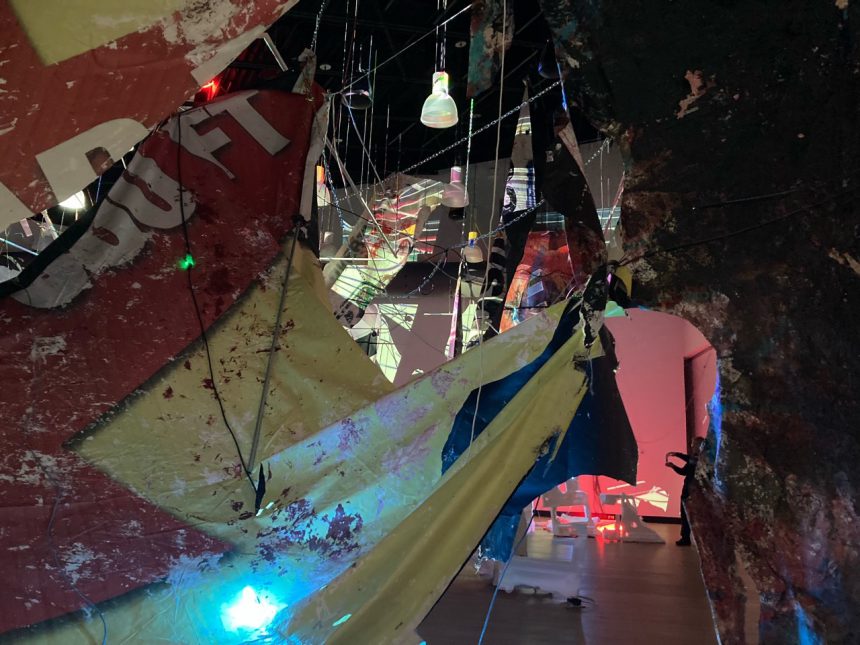By John McLeod
A new art installation opened at the Lamar Studio in Building 15 on Pensacola’s campus. Admission is free to the general public and students from September 12th to December 9th.
Tra Bouscaren, the artist behind the exhibit, focuses on “the intersection of waste culture and the surveillance state.” He will make several appearances at the exhibit because it will evolve as the semester progresses. As the student body changes through the semester, so will the exhibit.
Bouscaren referred to the exhibit as a “confluence of interest” compiling both the distorted unpleasantness of being surveilled and the waste culture that has been made prevalent in American society.
He said he exhibit was inspired by test patterns that would play on television since the 1920s. During the early periods of television, test patterns were originally used to signify that a station was on the air, but no show was being played.
Bouscaren explains that test patterns were used to calibrate televisions to display colors in the way that they are supposed to be seen. He compares this to the predispositions that people have based on their environments and social expectations. The patterns were designed by engineers to have no aesthetic properties but contain a controversial cultural icon. He believes that there is no space without aesthetic property, and the idea of a cultural symbol lacking aesthetic properties is tone-deaf.
The artist also describes other inspirations for the exhibit including the 1980’s dystopian movies and his work doing construction. This duality reflects the conflicts of interest that many students at PSC face.
Bouscaren explains, “When you’re looking at the paintings by fire or if you’re just living in the space you generate shadows on the walls of yourself. It’s involuntary, there’s no way to avoid it. It’s not just the painting. It’s an indexical representation of you and whatever you’re doing right now collapsed onto a painting so that the viewer and the viewed are one. That’s what I’m doing.”
The preconceptions of art usually dictate that the artist is in complete control of the art, but this exhibit is the exact opposite. The exhibit changes not only based on the day that one arrives but also who attends the exhibit at the time of viewing. Bouscaren’s “site-responsive” art refers to finding a space for the work of art and reflecting what story that space wants to tell. According to one Pensacola State College art instructor, “Site-specific means that the story the artist is telling does not change based on where it is told. Site-responsive means that the artist is reflecting the story of the venue itself.”
The exhibit will be on display throughout the Fall semester and will change based on when it is visited. Bouscaren’s other exhibits have been displayed at MOCA Tucson, the Santa Cruz Museum of Art and History, Stony Brook University Conference on Art and Philosophy, NPR Radio, Studies In Control Societies Journal, Ildo Lobo Center for Culture in Praia, the Rubin Center for the Visual Arts, and the CAA Conference in Los Angeles.

